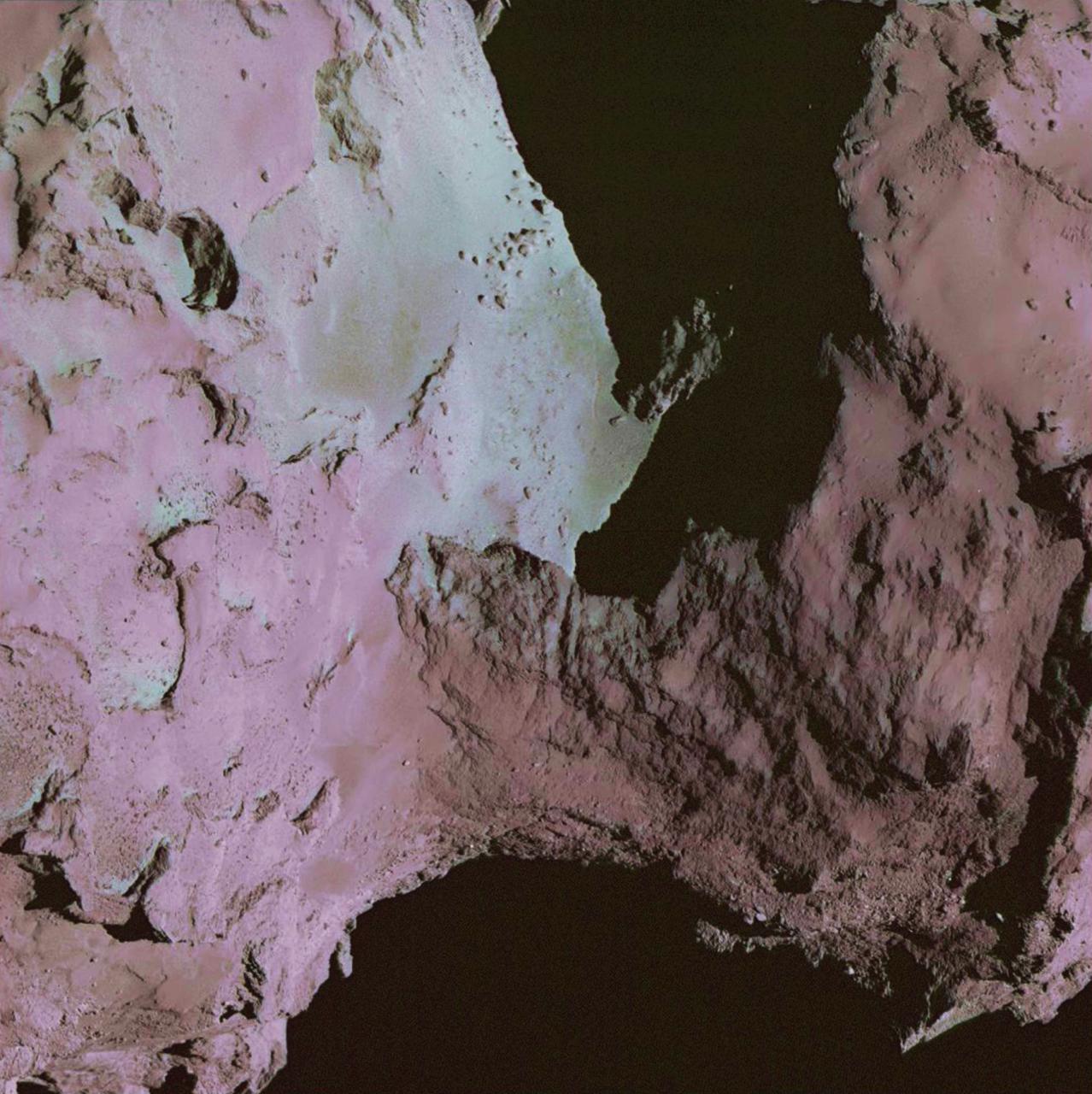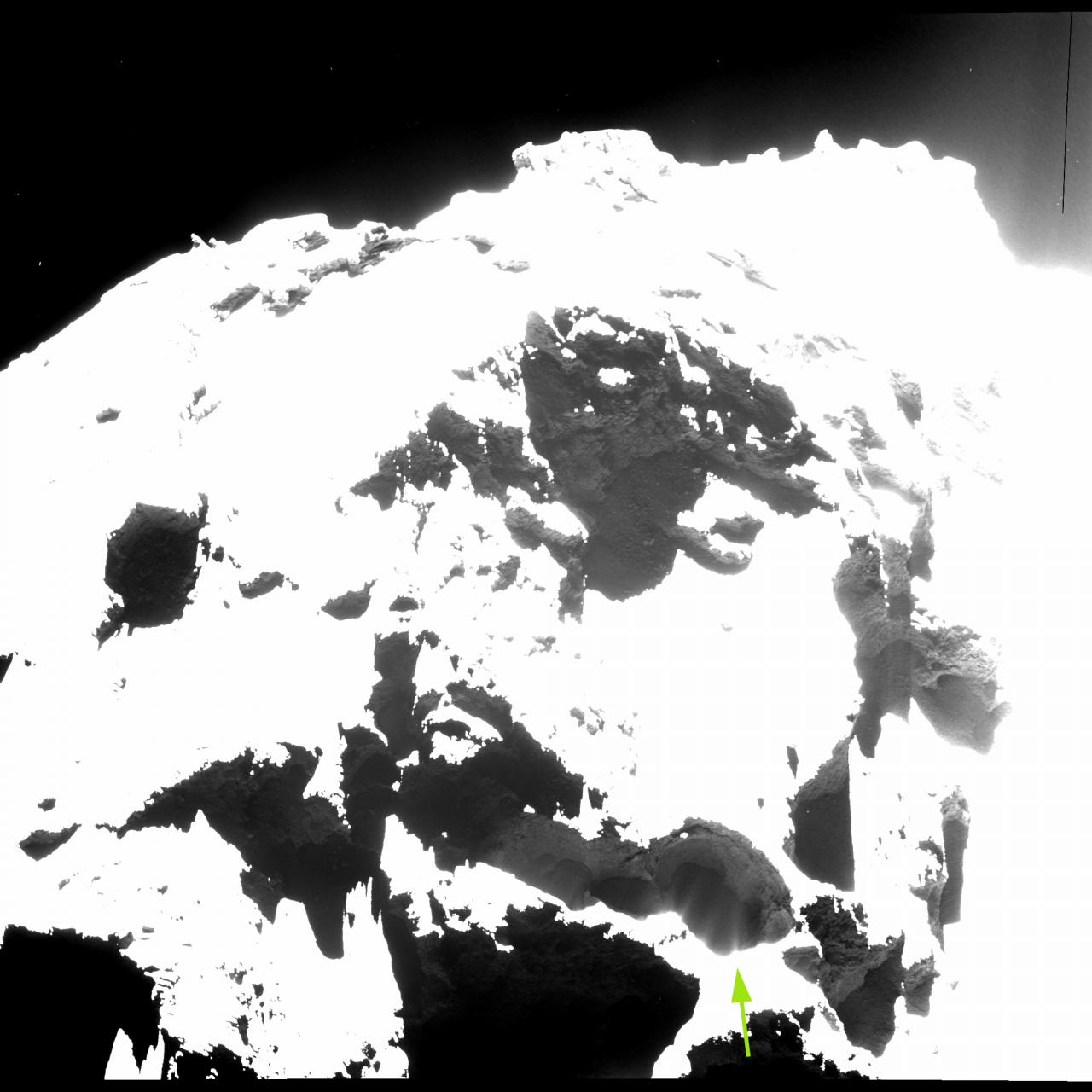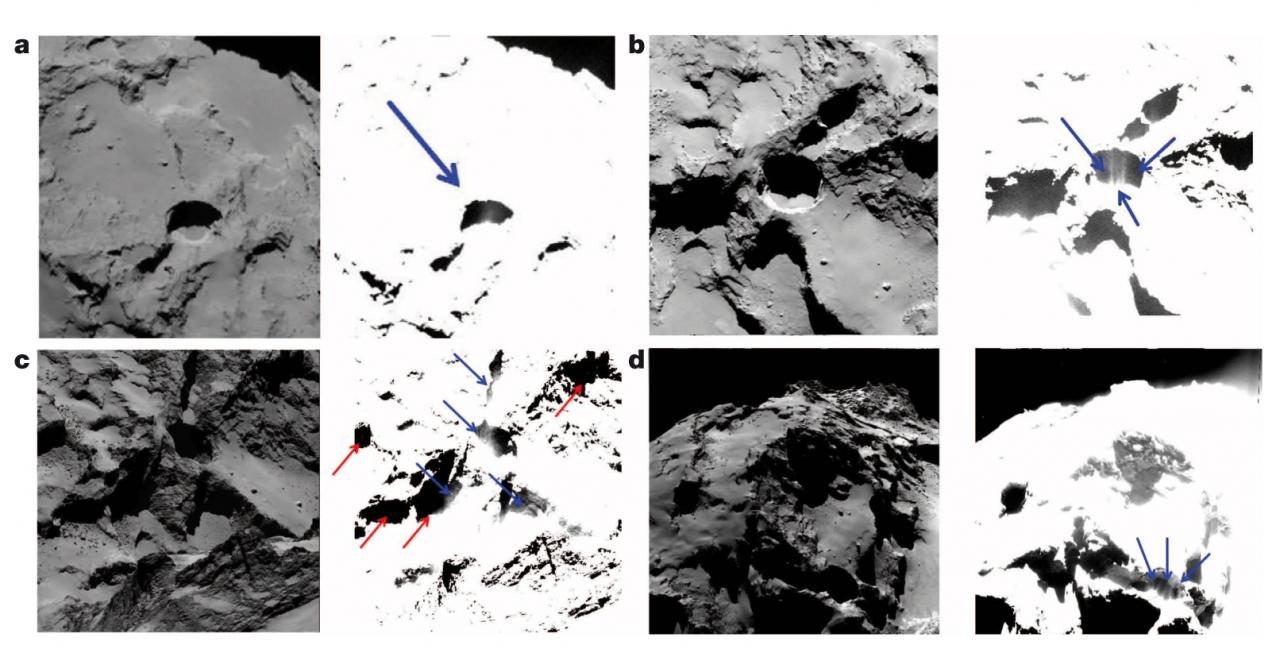Activity inside pits of comet 67P observed by the Rosetta mission helps to explain their origin
Origin of circular depressions found on various comets has finally been discovered thanks to the observations of the OSIRIS camera aboard the Rosetta mission (ESA)
In 1988, deep circular cavities resembling natural pits were discovered inside the nucleus of comet Halley. The origin of these structures, which are quite common on comets, has been a subject of debate for decades. Recently, observations of comet 67P Churyumov-Gerasimenko made by the OSIRIS camera aboard the Rosetta mission (ESA) made it possible to detect activity inside these cometary pits for the first time and to determine the mechanism that produces them. The study, involving researchers from CSIC attached to the Institute of Astrophysics of Andalusia and the Center for Astrobiology, will be featured tomorrow in Nature magazine.

Detail of comet 67P nucleus displaying one of the circular cavities under study (top left). Source: ESA/Rosetta/MPS for OSIRIS Team MPS/UPD/LAM/IAA/SSO/INTA/UPM/DASP/IDA.
"Between July and December of last year, we observed comet 67P from a mere eight kilometers of its surface, which allowed us to visualize structures with an unprecedented level of detail,” says Pedro J. Gutiérrez, researcher at the Institute of Astrophysics of Andalusia (IAA-CSIC), who took part in the mission and alerted the rest of the team to the existence of jets of gas and dust emerging from the walls of the pits.
The jets are produced when the ice inside the nucleus of the comet sublimates and they are one of the features of what is commonly known as cometary activity, responsible for the comas and tails of comets as well as for explosive phenomena that liberate great amounts of material instantaneously. In fact, it was believed that these explosions were the source of the cometary pits.

Overexposed image of 67P, displaying jets of gas and dust in one of the pits (signaled with an arrow). Source: ESA/Rosetta/MPS for OSIRIS Team MPS/UPD/LAM/IAA/SSO/INTA/UPM/DASP/IDA.
A NEW MECHANISM
The OSIRIS camera team found eighteen pits just in the northern hemisphere of comet 67P, measuring from a few score to hundreds of meters in diameter and reaching up to several hundred meters in depth. Their analysis has made it possible to discard normal sublimation processes as well as explosive events.
"We were able to confirm that the material ejected during the bouts of activity is far lower than what we see buried in the pits, so we had to find an alternative mechanism to explain it," says Luisa M. Lara (IAA-CSIC), member of the OSIRIS team who observed the crumbling of walls in various areas of the comet for the first time.

Detail of various active pits in the comet’s nucleus. Source: ESA/Rosetta/MPS for OSIRIS Team MPS/UPD/LAM/IAA/SSO/INTA/UPM/DASP/IDA.
This new mechanism, called sinkhole collapse, may imply the existence of cavities situated between one and two hundred meters below ground level whose roofs end up crumbling down. Thus a deep, circular pit is formed, on the walls of which unprocessed material remains which then begins to sublimate and creates the observed jets.
Even though the collapse is sudden, the cavity may date back to the formation of the cometary nucleus, or it may be due to the sublimation of more volatile ice than that of water, such as carbon monoxide or dioxide, or to the existence of an internal energy source that unleashes sublimation. “Notwithstanding the process that creates the cavities, the existence of active pits shines a light on the heterogeneous character of the first few hundred meters under the actual surface of comet 67P”, according to José Juan López Moreno, IAA-CSIC researcher participating in the Rosetta project.
After its formation, the walls of the pit start to retreat due to the continued sublimation of the ice, making the diameter of the pit grow. These structures thus allow us to determine the state of the cometary nucleus: if it is undeveloped it will display irregularity and many pits, whereas if it is more evolved it will display a softer surface.
J-B. Vincent et al. "Large heterogeneities in comet 67P as revealed by active pits from sinkhole collapse”". Nature. DOI: 10.1038/nature14564
Instituto de Astrofísica de Andalucía (IAA-CSIC)
Unidad de Divulgación y Comunicación
Silbia López de Lacalle - sll[arroba]iaa.es - 958230532
http://www.iaa.es
http://divulgacion.iaa.es

